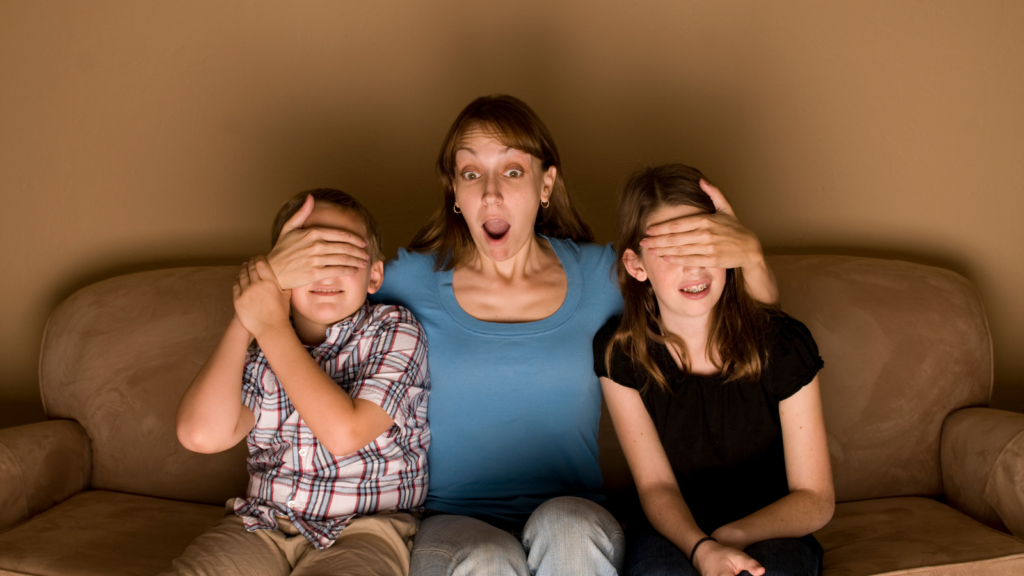In the vast universe of child development, parental guidance plays a pivotal role. It’s the compass that guides children towards becoming responsible, well-rounded adults. But what does parental guidance suggested really mean, and how does it impact a child’s growth?
This article will delve into the essence of parental guidance, its significance, and its influence on a child’s life. We’ll explore practical strategies for effective guidance and highlight the potential pitfalls to avoid. So, whether you’re a new parent or an experienced one, stay tuned for an enlightening journey into the realm of parental guidance.
Parental Guidance Suggested
Definition and Importance
 Parental Guidance Suggested embraces the essence that children’s content consumption gets shaped by parental intervention. It’s not a rule, merely a signal. It prompts parents, or guardians, to consider the suitability of content for their kids. Objectively, it cultivates a safer, well-rounded digital exposure. It’s effectively a child-protection tool, moderating exposure to potentially inappropriate material.
Parental Guidance Suggested embraces the essence that children’s content consumption gets shaped by parental intervention. It’s not a rule, merely a signal. It prompts parents, or guardians, to consider the suitability of content for their kids. Objectively, it cultivates a safer, well-rounded digital exposure. It’s effectively a child-protection tool, moderating exposure to potentially inappropriate material.
Historically, Phrase Parental Guidance Suggested eclipsed from the movie rating system, back in 1968. However, its significance began looming larger with the dawn of the internet era. As digital landscapes expanded, it soon began flagging know-how beyond movies, identifying content across multimedia platforms. Today, it regulates a spectrum – from television shows, video games to over-the-top (OTT) content platforms. Hence, resulting in a more inclusive, more comprehensive parental monitoring tool in the digital age.
Parental Guidance Ratings in Different Media Formats
Movies and TV Shows
 The Motion Picture Association (MPA) administers the most well-known rating system for movies and TV shows. It uses the ‘PG’ tag to denote a film that parents might find inappropriate for their young children. For instance, a movie like “Up” (2009) has a PG rating, implying that although it’s largely suitable for audiences, parental guidance is advised due to some scenes with emotional intensity.
The Motion Picture Association (MPA) administers the most well-known rating system for movies and TV shows. It uses the ‘PG’ tag to denote a film that parents might find inappropriate for their young children. For instance, a movie like “Up” (2009) has a PG rating, implying that although it’s largely suitable for audiences, parental guidance is advised due to some scenes with emotional intensity.
Video Games
The realm of video gaming, too, leverages parental guidance ratings. The Entertainment Software Rating Board (ESRB) oversees game ratings, indicating games’ suitability for different age groups. The rating ‘E10+’, for example, suggests that content is generally suitable for ages 10 and up, but some material could warrant parental preview. A game like “Minecraft” carries this rating; it’s largely age-friendly, but some elements might need parental examination.
Impact of Parental Guidance Suggested on Children’s Content
Children’s Understanding of Ratings
Child comprehension of ratings, despite its inherent importance, often remains overlooked. Children, especially those below ten years, may find it challenging to comprehend the meaning of Parental Guidance Suggested. For instance, in case of the movie “Up” the ‘PG’ rating might be perplexing for a seven-year-old to understand without adult elucidation. Therefore, it becomes crucial for parents to clarify these ratings for children, molding them into informed consumers of media.
Does Parental Guidance Make a Difference?
Parental guidance doesn’t just matter; it constitutes a major factor in moderating children’s media exposure. Research by the American Academy of Pediatrics suggests that parental involvement significantly reduces children’s screen time, thus promoting healthier habits. For example, famously kid-friendly game Minecraft, despite its E10+ rating, merits to be supervised under parental guidance. The impact thus proves to be a positive one, propelling children towards balanced digital consumption.
Tips for Parents With Parental Guidance Suggested Ratings
Examining the Rating
 Examining a Parental Guidance Suggested rating is critical in determining media suitability for children. Parents must delve into the specific content elements that have warranted these ratings. For instance, many movies earn these labels due to language, violence, or suggestive themes.
Examining a Parental Guidance Suggested rating is critical in determining media suitability for children. Parents must delve into the specific content elements that have warranted these ratings. For instance, many movies earn these labels due to language, violence, or suggestive themes.
Gauging children’s maturity level is paramount for parents deciding on media content consumption. While formal age ratings are a starting point, they don’t consider each child’s unique development, per developmental psychologist David Anderson. For example, a movie like ‘Jurassic Park’ could prove overwhelming for some seven-year-olds but fine for others.
Shaping Child’s Media Consumption
Parental guidance plays a crucial role in shaping a child’s media consumption, acting as a protective shield against potentially harmful content. The “Parental Guidance Suggested” rating serves as a valuable tool in this regard, enabling parents to discern suitable media for their children. However, it’s also important to strike a balance, ensuring children aren’t overly restricted and can develop their independence.



